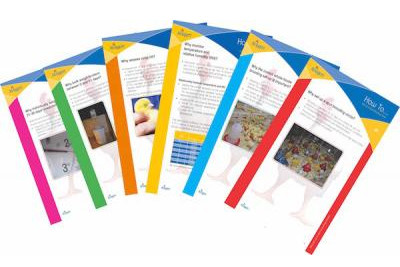Aviagen adds to Broiler How-Tos series

Global poultry breeding company Aviagen has added a new Broiler How-Tos series for producers to its existing literature library.
The newly published broiler series has been designed to give customers practical, hands-on, step-by-step instructions on key management practices.
They can be used as training documents or as everyday support for farmers showing what to do and how to do it, as well as providing help with any troubleshooting.
Topics include:
- How to… set up a spot brooding circle
- How to…. Set up a whole housing brooding
- How to… monitor temperature and relative humidity
- How to… assess crop fill
- How to… bulk weigh broilers between 0-21 days
- How to… individually weigh broilers from 21-28 days onwards
Michael Longley, spokesman for Aviagen’s global technical transfer team, said: “Our customer feedback tells us that broiler management is a significant area of focus because it has a direct influence on production costs and profitability.
“The Broiler How-Tos” are, therefore, a valuable addition to our literature resource,” he added.
How-to on-farm tools now cover all areas of the production process with documents on topics of hatchery management and broiler and broiler breeder management, as well as ventilation.
Among the top tips for monitoring temperature and relative humidity are:
- Make sure you understand the relationship between temperature and relative humidity (RH)
- Higher RH reduces evaporative heat loss, increasing effective temperature
- Make sure you have the right equipment for monitoring – this should include hand held temperature/humidity meter, manual hygrometers, electronic temperature and RH sensors – these are linked to the automatic control computer and mercury minimum and maximum thermometers
Producers should take 1 thermometer and 1 hygrometer and place at the centre of the house beside the electronic sensors. 2 additional thermometers should be placed half way between the centre and the end walls of the house. They should be located where the birds cannot touch them and are not in the direct line of any heat sources. Farmers should then calibrate the electronic sensors before the birds are placed.
The next step involves placing 1 manual thermometer and 1 hygrometer outside of the house in a shaded area away from direct sunlight to establish climatic conditions.
Finally, all sensors should be checked at the same time every day as part of the daily routine. Minimum and maximum readings should be recorded and the manual thermometers reset. Hand held temperature and humidity meters can be used to provide instant temperature and humidity measurements.
When interpreting results, the guide suggests that producers should consider the behaviour of the birds:
- Enter the house and spend five minutes watching and listening to the birds
- Pay close attention to bird behaviour and activity and house environment
- Consider how many birds are feeding, drinking and resting; what is respiration like and what is the litter quality like?
Birds should be evenly spread out and feeding and drinking. If they are panting and have wings out to the side or quiet and spread out they may be too warm. If they are noisy, huddling and have wet litter, they may be too cold.
During brooding, farmers should also check crop fill and vent temperature.
The guides are available on Aviagen’s website












